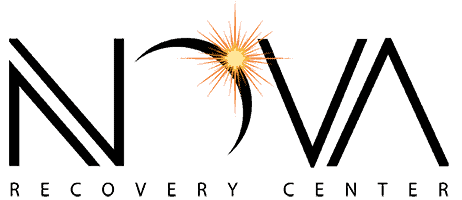Last Updated on October 11, 2025
Heroin: An Element of Death
At a Glance: “Heroin — An Element of Death”
- Explains how heroin acts on opioid receptors to create euphoria while dangerously slowing breathing and heart rate, raising overdose risk.
- Outlines common forms (white powder, black tar, brown rock) and typical purity ranges, noting routes of use and associated dangers.
- Summarizes treatment approaches: individualized therapy, medication-assisted treatment to ease withdrawal, and holistic practices that support long-term recovery.
- Directs readers to get help through Nova Recovery Center, including CBT-based care, Texas locations, and contact options to start treatment.
Table of Contents
Heroin is a poison that is procured from morphine. It was originally created in 1874 by the pharmacist C. R. Alder Wright and was used to help ease relief for those who are in pain or had difficulty sleeping. Heroin is classified as an opiate, which means it may have effects similar to morphine or codeine because it contains molecules that bind to molecules found on cells throughout the body called opioid receptors, which can create feelings of pleasure and relaxation
What Does Heroin Do?
Heroin mimics natural endorphins that are released by our brain when we exercise or experience strong emotions like love, which makes us feel good and provides temporary relief from pain, sadness, or depression. Heroin depresses the respiratory system and slows down your heart rate. People who use heroin don’t always know exactly what they are getting and may be taking other substances with the heroin. This can make it more dangerous, increasing the intensity of the high risk of overdose. Learn the signs of heroin addiction and when to seek help.
Freedom Starts Here. Take Back Your Life Today.
Same-Day Admissions in Austin Available.
How Strong is Heroin?
Heroin comes in 3 basic forms: white powder, black tar, and brown rock. The white powder has a measured purity of 1-6% while the rock has a purity range between 40-60%. The white powder version is usually snorted or smoked while the black tar form is typically injected. The brown rock form has a purity of at least 90%
The effects of heroin are often similar to those of morphine and codeine, so they are used to treat pain. It is also used to medicate the prodrome of diabetes and diarrhea. However, there have been reports that heroin can cause the user to feel high even if it is still not being digested. Opiates like morphine can also be used with other drugs like alcohol or sedatives causing an accident or overdose. Experts believe that there may be more differences among illicit substances than previously thought because some studies show that the effects of opiates depend on what other substances are combined with them.
Heroin Treatment:
Heroin addiction medication is a tangled issue that requires time and effort to overcome. Individuals who get hooked on heroin can have difficulty finding a rehabilitation program that will not only provide support but also be effective in combating the physical and mental effects associated with opioid dependence. In order to recover from heroin addiction, individuals must undergo professional therapy at Drug Rehab and partake in programming tailored to their needs.
The subsequent are some of the most potent ways that treatment centers combat heroin addiction:
Therapy
Therapy is amongst the most crucial tools in healing. It provides a connection with others as well as an opportunity to address underlying issues related to drug abuse such as anxiety, depression, or trauma. Many treatment centers offer therapy sessions that deal specifically with heroin addiction. In addition, some may provide group sessions that also encompass therapy.
Although withdrawal from opiates can be physically dangerous, medication-assisted therapy makes the process much easier on the body. Medication administered during detox can reduce symptoms associated with opiate withdrawals and help patients to focus on rehabilitation.
Holistic treatment
Incorporating holistic aspects of recovery is a great way for addicts to connect with their bodies again and learn to live a balanced lifestyle. Techniques like yoga, meditation, or art therapy are all encouraged during rehab because they help individuals create a routine for living in recovery that does not involve drug abuse.
Treatment programs for heroin addiction are meant to help individuals overcome the physical and psychological aspects of opioid dependence. consult a qualified rehab facility right once if you or anyone you know is suffering from opioid addiction.
Where Do I Turn For Help?
At Nova Recovery Center, we provide the best cognitive behavioral therapy to combat your addictions. It trains you mentally, emotionally, and physically to stay out of substance abuse. We have many sober living homes and an Austin drug detox center to support your first step. Book an appointment today. If you feel that you need help with an addiction and want to learn more about outpatient drug rehab Austin, Texas, please call Nova Recovery Center at (888) 427-4932 or contact us online today.
Heroin, Opioids & Recovery: Frequently Asked Questions
What is heroin and why is it so addictive?
Heroin is an illegal opioid made from morphine that binds to opioid receptors in the brain, producing intense euphoria and respiratory depression; repeated exposure changes brain circuits involved in reward and self‑control, driving compulsive use.
How is heroin used?
Common routes include injecting, snorting, or smoking; method of use can influence overdose risk and disease transmission.
What are the signs of heroin addiction?
Warning signs may include escalating tolerance, withdrawal symptoms between uses, neglect of responsibilities, and continued use despite harm.
What is opioid use disorder (OUD)?
OUD is a medical condition where opioid use causes distress or impairment; it can result from prescription or illicit opioids like heroin.
What does withdrawal from heroin/opioids feel like and how long does it last?
Withdrawal can include muscle aches, nausea, diarrhea, anxiety, and insomnia; onset and duration vary by drug and dose but often begin within hours to a day and improve over several days with appropriate care.
What are the evidence‑based treatments for heroin addiction?
Effective care often combines medications (e.g., methadone, buprenorphine, naltrexone) with behavioral therapies and recovery supports.
Does medication‑assisted treatment (MAT) just “swap one drug for another”?
No. When taken as prescribed, MAT stabilizes brain chemistry, reduces withdrawal/craving, and improves outcomes such as employment and reduced criminal activity and disease transmission.
Which medications are used in MAT for opioids?
Methadone (full agonist), buprenorphine (partial agonist), and naltrexone (antagonist) are FDA‑approved options used with counseling.
What happens in detox—Is detox the same as treatment?
Detox manages acute withdrawal, sometimes with medications, but it’s only the first step; ongoing treatment and recovery planning are essential for long‑term success.
What’s the difference between inpatient and outpatient rehab?
Inpatient provides 24/7 structured care; outpatient delivers scheduled services while you live at home—suitability depends on severity, stability, and support system.
How does cognitive behavioral therapy (CBT) help with heroin addiction?
CBT builds coping skills to manage triggers, restructure thinking patterns, and reduce relapse risk; it is well supported across substance use disorders and pairs well with MAT.
Are holistic approaches (e.g., yoga, meditation, art) useful?
They can complement—not replace—evidence‑based medical and behavioral care by supporting stress management, sleep, and engagement in recovery.
What is recovery housing / sober living and who benefits?
Recovery housing offers substance‑free, peer‑supported living with structure and accountability, which can aid transition after rehab.
Other Drug and Alcohol Rehab Locations
Medical Disclaimer
The information on this page is intended for educational purposes only and should not replace professional medical advice, diagnosis, or treatment. Heroin use, withdrawal, and addiction recovery require medical supervision and professional care. Always consult a licensed healthcare provider before beginning, changing, or stopping any treatment program. If you are experiencing severe withdrawal symptoms, a medical emergency, or thoughts of self-harm, call 911 in the United States or seek immediate medical assistance from a qualified healthcare professional.
Nova Recovery Center Editorial Guidelines
By instituting a policy, we create a standardized approach to how we create, verify, and distribute all content and resources we produce. An editorial policy helps us ensure that any material our writing and clinical team create, both online and in print, meets or exceeds our standards of integrity and accuracy. Our goal is to demonstrate our commitment to education and patient support by creating valuable resources within our realm of expertise, verifying them for accuracy, and providing relevant, respectful, and insightful data to our clients and families.
- Centers for Disease Control and Prevention. (2025a, June 9). Heroin. Retrieved October 12, 2025, from https://www.cdc.gov/overdose-prevention/about/heroin.html
- Centers for Disease Control and Prevention. (2025b, June 9). Preventing opioid overdose. Retrieved October 12, 2025, from https://www.cdc.gov/overdose-prevention/prevention/index.html
- MedlinePlus. (2025, May 30). Heroin. U.S. National Library of Medicine. Retrieved October 12, 2025, from https://medlineplus.gov/heroin.html
- National Institute on Drug Abuse. (n.d.). Heroin (DrugFacts/overview). National Institutes of Health. Retrieved October 12, 2025, from https://www.drugabuse.gov/publications/drugfacts/heroin
- Substance Abuse and Mental Health Services Administration. (2025). Medications for substance use disorders. Retrieved October 12, 2025, from https://www.samhsa.gov/substance-use/treatment/options

